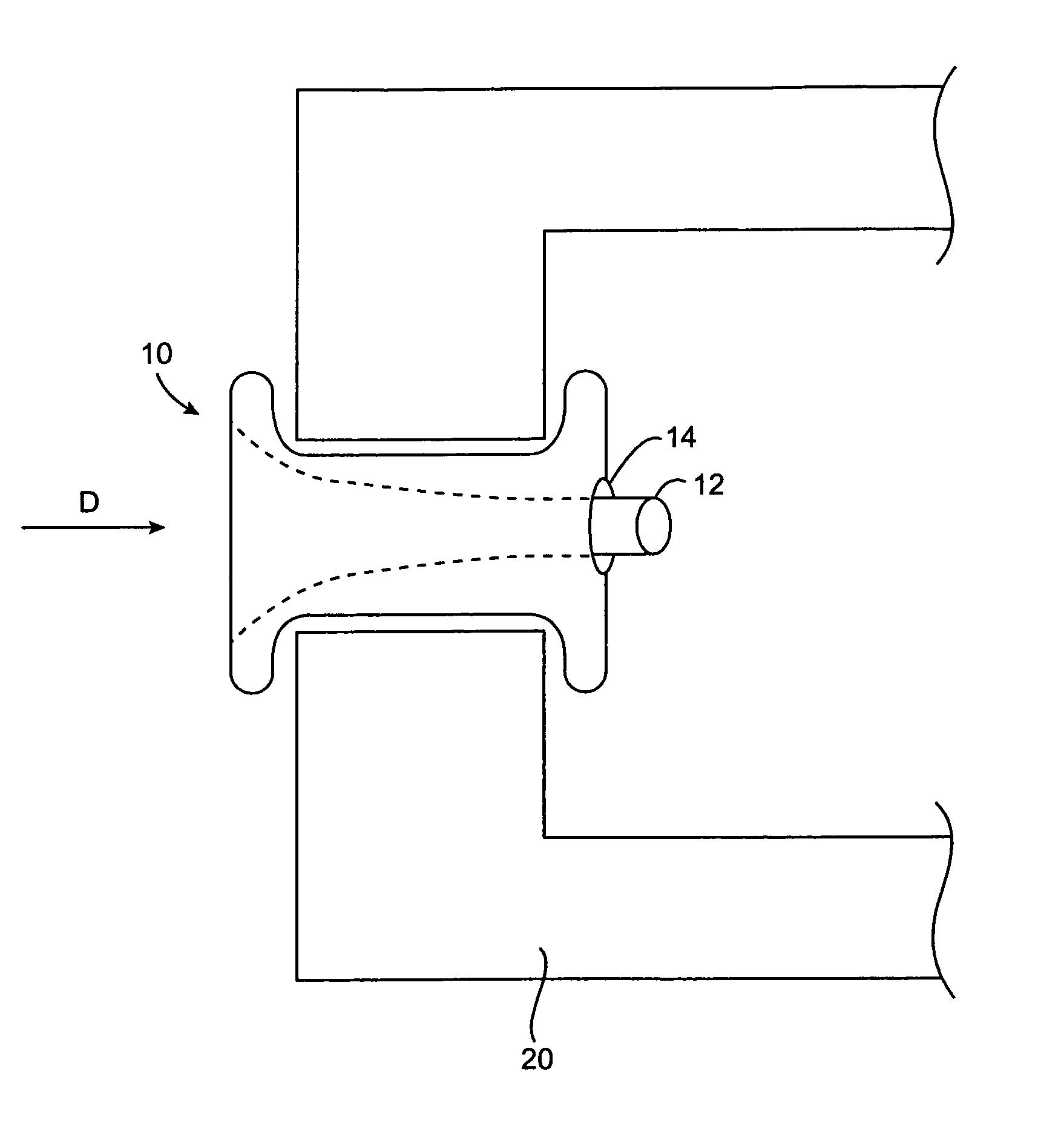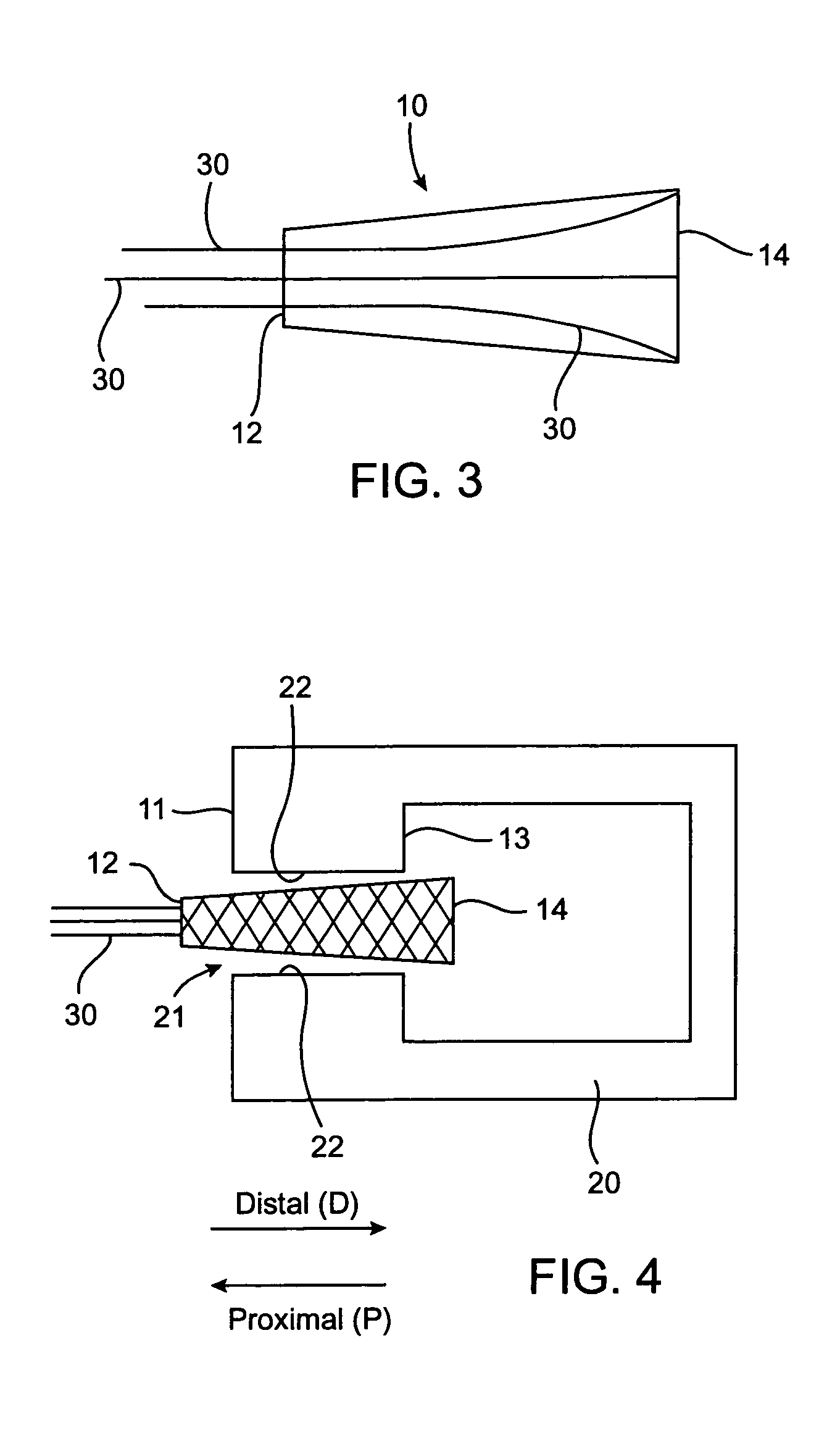Annulotomy closure device
a technology of annuloplasty and closure device, which is applied in the field of annuloplasty closure device, can solve the problems of herniated disc, hole may become enlarged or elongated in nature, and is vulnerable to pressure, and achieves the effect of enhancing tissue growth and encouraging rapid healing
- Summary
- Abstract
- Description
- Claims
- Application Information
AI Technical Summary
Benefits of technology
Problems solved by technology
Method used
Image
Examples
Embodiment Construction
[0039]The present invention provides methods and apparatus for sealing holes in various bony structures. In a preferred aspect, the present invention provides methods and apparatus for sealing a surgical hole drilled in a patient's annulus. As such, the present invention is ideally suited to seal a hole drilled in an intervertebral disc such that nucleus pulposus on the inside of the disc cannot seep or flow through the hole to the outside of the disc as the disc is compressed during normal movement. The present system is not limited only to sealing holes which have been drilled in an annulus, but may also be used to seal naturally occurring holes as well. Moreover, the present invention is not limited to sealing holes in the annulus alone but may be used to seal any hole, thereby inhibiting the passage of soft tissue therethrough.
[0040]FIG. 1 shows a generally cylindrical tubular mesh which is comprised of a, multiplicity of monofillament or multifilliar strands 13 of suture-type m...
PUM
 Login to View More
Login to View More Abstract
Description
Claims
Application Information
 Login to View More
Login to View More - R&D
- Intellectual Property
- Life Sciences
- Materials
- Tech Scout
- Unparalleled Data Quality
- Higher Quality Content
- 60% Fewer Hallucinations
Browse by: Latest US Patents, China's latest patents, Technical Efficacy Thesaurus, Application Domain, Technology Topic, Popular Technical Reports.
© 2025 PatSnap. All rights reserved.Legal|Privacy policy|Modern Slavery Act Transparency Statement|Sitemap|About US| Contact US: help@patsnap.com



